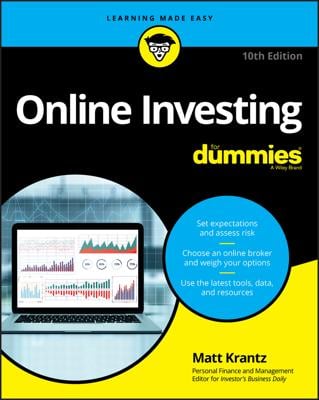To get a handle on possible market effects on your specific security, you want to measure overall market sentiment. You do this by looking at market statistics. Most sentiment indicators look outside the price dynamics of a particular security or index of securities for information about whether the trading crowd is humming along with expectations of normalcy or is willing to jump ship.
In technical trading, the key principle is to study what people do (price and volume), not what they say.
Monitoring investors: The Bull/Bear Ratio
Key reversals come when the majority of advisors (60 percent or more) are bullish or bearish. In other words, when everyone recognizes the trend bandwagon and has hopped on board, it’s over.
Various services measure bull and bear sentiment in general, in specialized sectors, and in mutual funds. You can find the Bull/Bear Ratio (bullish sentiment versus bearish sentiment) and other indicators on hundreds of Web sites and in business newspapers. To get a specific Bull/Bear Ratio from a specific vendor the minute it’s published, you have to pay a subscription fee.
Following the money: Breadth indicators
Breadth indicators measure the degree of participation by traders in the overall market represented by an index, such as the Dow or S&P 500. You can track the breadth indicators to get a feel for market sentiment.
Breadth indicators include
Ratio of advancing to declining issues: Measures the mood of the market. Stocks that are reaching a higher price today than yesterday are called advancing issues. Stocks that are reaching lower prices are called declining issues. Here are some advance/decline equations:
Declining issues – Advancing issues = The advance/decline line
Advancing issues/Declining issues = The advance/decline ratio (A/D)
Difference between issues making new highs and new lows: The logic is the same as in the advance/decline indicator. If more stocks in an index are closing at higher prices than the period before, bullishness is on the rise. When a higher number are putting in new lows, supply is overwhelming demand and the mood must be bearish.
Following the betting: Options
The Chicago Board Options Exchange (CBOE) publishes the ratio of puts to calls. Here’s what you need to know about puts and calls when gathering info about sentiment:
Put: The right to sell at a set price in the future. Traders who buy puts are bears (pessimists) who think the index won’t reach their set price.
Call: The right to buy at a set price in the future. Traders who buy calls are bulls (optimists) who think they’ll profit when the market rises to and beyond their set price.
The put/call ratio is an indicator of whether sentiment is bearish or bullish. An extreme of emotion like this is usually wrong, and marks a turning point. You should start planning to do the opposite. The same line of thinking holds true for a low put/call ratio: When emotions are running strongly optimistic, watch out for an opportunity to take advantage of a change.
Viewing volatility: The VIX
The volatility index (VIX) is among the most popular breadth indicators today. Theoretically, you can create a volatility index for any security in which options are traded, although it takes computational expertise. For your purposes, know that when the crowd is jumpy and nervous, it projects that anxiety into the future and assumes that prices will be abnormal.
You can use VIX as a contrary indicator. When VIX is either abnormally high or abnormally low, you know it’s getting to the right time to trade against the crowd. Start watching for reversal points in your own stable of securities. A high VIX value means exactly the opposite of what it seems to mean — the bottom isn’t coming, it’s already in! If VIX is low, the crowd is girding its loins for a big move. When VIX is low, traders are complacent. They’re projecting the same price levels, or nearly the same levels, into the immediate future with little variation and therefore little risk.

